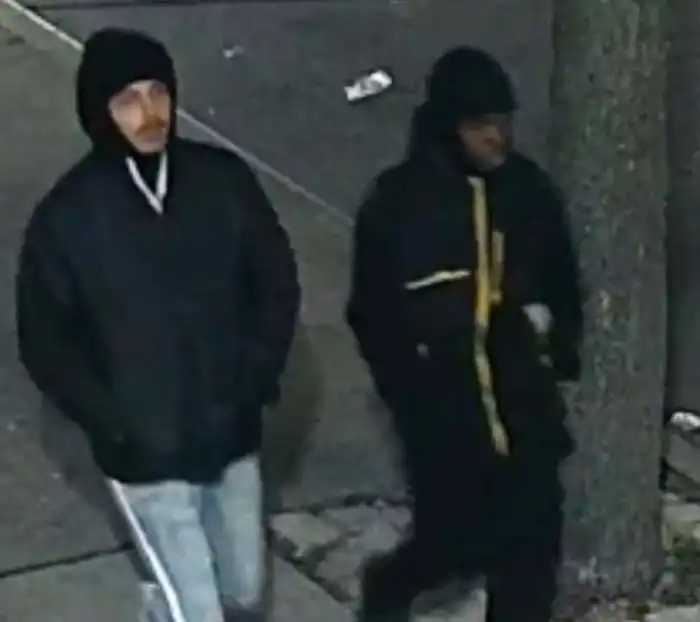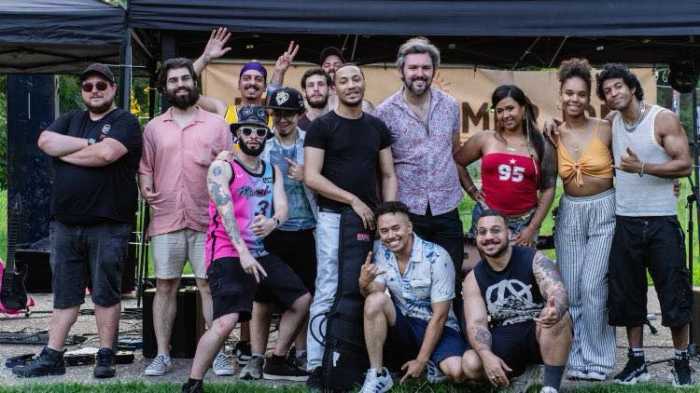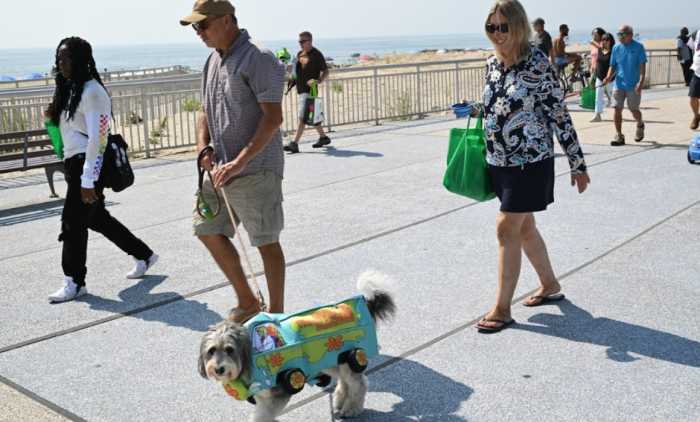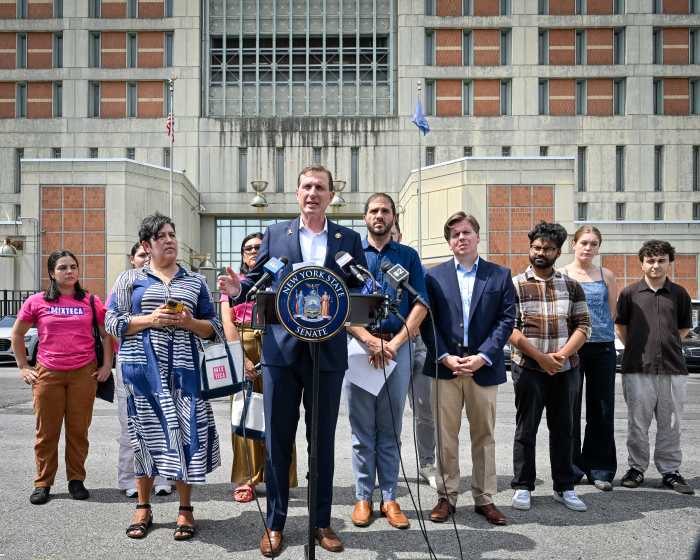Dozens of New Yorkers sounded off for hours Thursday morning during the first public hearing about the Metropolitan Transportation Authority’s plan to toll drivers entering Manhattan below 61st Street known as congestion pricing.
Almost 100 speakers signed up to give their two cents in two minutes or less during the first of 13 virtual meetings that was focused on gathering feedback from residents of New York City’s outer boroughs on the traffic scheme.
The charge, officially dubbed Central Business District Tolling Program (CBDTP) by the MTA, is slated to bring in $1 billion in annual revenue and would unlock $15 billion in bonds for MTA to fund upgrades its ailing subway and bus system.
One Brooklynite said she would happily pay to cross the river if it helps get public transit back on track.
“I am happy to contribute my part whenever I drive into Manhattan,” said Sara Clugage. “Paying that fee will benefit me in the long run and will also benefit my neighbors and all New Yorkers. So please, take my money.”
She said she bought a car during the pandemic because a knee injury made it difficult to get up the stairs to her local subway stop. But the former straphanger hoped the charge could cover the costs of installing elevators and boost train service.
“I miss taking the train, it used to be the easiest and fastest way for me to get around the city and I want to start riding again,” Clugage said. “To make the subway efficient, reliable, and accessible, the MTA needs money. Congestion pricing will give the MTA an ongoing source of revenue that it desperately needs, to build and maintain station elevators, and modernize the system.”
In addition to providing much-needed funding, MTA officials estimate the charge will reduce traffic heading into the Central Business District zone by 15-20%, cutting pollution and easing congestion for drivers who still need to get to 60th Street or further downtown.
Some 96 people signed up to speak Thursday morning, and the meeting ran a little over 2 1/2 hours. Another 185 people have registered to talk at the Thursday evening meeting, dedicated to those living inside the tolling zone in Manhattan.
Some speakers said the toll would be a tax on outer-borough residents heading into the southern part of the island, especially those coming from more far-flung parts of the city with fewer reliable transit options.
“Congestion pricing would represent an unfair burden to one of the poorest counties in the city and one of the poorest counties in the country,” said Bronxite Schinae Wilson. “The trains aren’t reliable, weekend service is often not operational.”
A Queens resident countered that cars cause air and noise pollution and that he, like many others from that borough, prefer to use public transit, even if it means transferring several times.
“I’m a born-and-bred New Yorker hailing from the deeper reaches of Queens, been traveling into the CBD on a regular basis since middle school. Not once did I ever think it would be a good idea to travel there by car,” said Thomas Huzij. “New Yorkers cannot hear ourselves think with all the noise cars create, we cannot breathe the air without damaging our lungs, we can’t even safely cross the street because the threat of the automobile in our city.”
MTA has not decided on a price yet, but deputy chief operating officer Allison de Cerreño said at the beginning of the hearing that it would likely range form $9-$23 for E-ZPass holders and $14-$35 for toll by mail during peak period, with discounts during off-peak and overnight hours.
Exempt from the charge are emergency vehicles, vehicles transporting people with disabilities, or those belonging to families living in the CBD with a household income of $60,000 a year or less.
If officials decide to make any more carveouts, the individual tolls would go up in order to still meet MTA’s revenue goals, according to de Cerreño.
As part of a 16-month environmental assessment, MTA plans to hold a dozen more public outreach meetings over the coming three weeks, covering vast areas as far as north as Poughkeepsie; Ocean County, New Jersey, to the south; Montauk to the east, and the New Jersey-Pennsylvania border to the west.
Behold, the study area included in the congestion pricing public outreach pic.twitter.com/m3XaS9W0hx
— Good Idea Dave (@DaveCoIon) September 15, 2021
One Staten Islander slammed the agency for the lengthy schedule and for allowing much of the tri-state region to chime in on the Big Apple’s affairs.
“You could have put the tolls on the East River bridges and be done with it, but now you gotta get 28 different counties in the tri-state area involved,” said New Dorp resident Patrick Johnson. “It’s a joke, I am disgusted with the MTA, with the Department of Transportation. You people were a day late and a dollar short thinking about this.”
MTA’s next public virtual hearing on congestion pricing will be at 6 p.m., with a focus on residents living in Manhattan below 61st Street. For more information how to tune in and the full schedule of feedback sessions, visit the dedicated project website at new.mta.info/project/CBDTP.





























